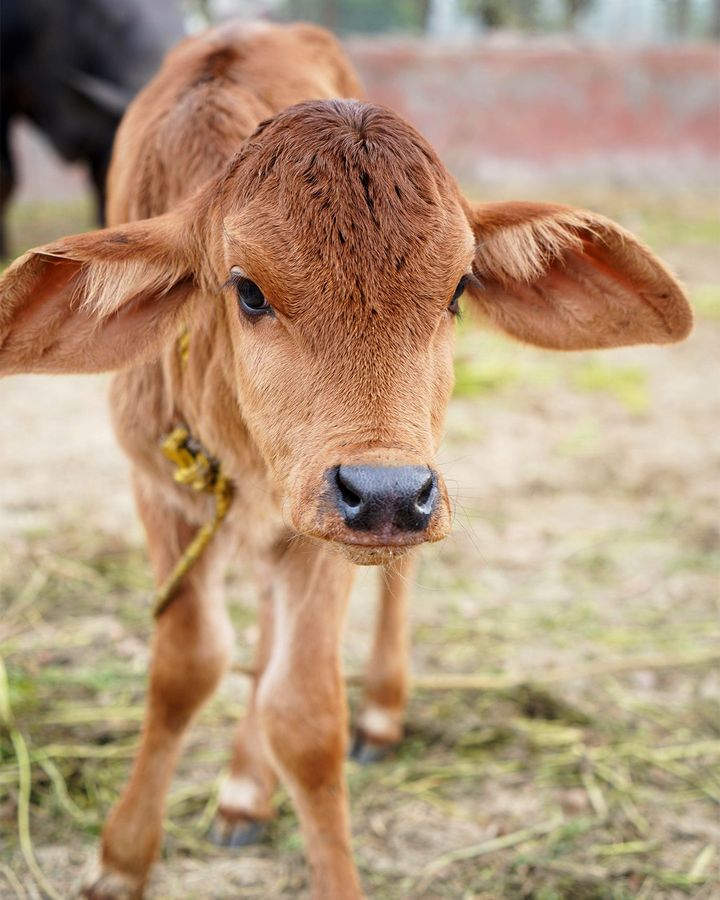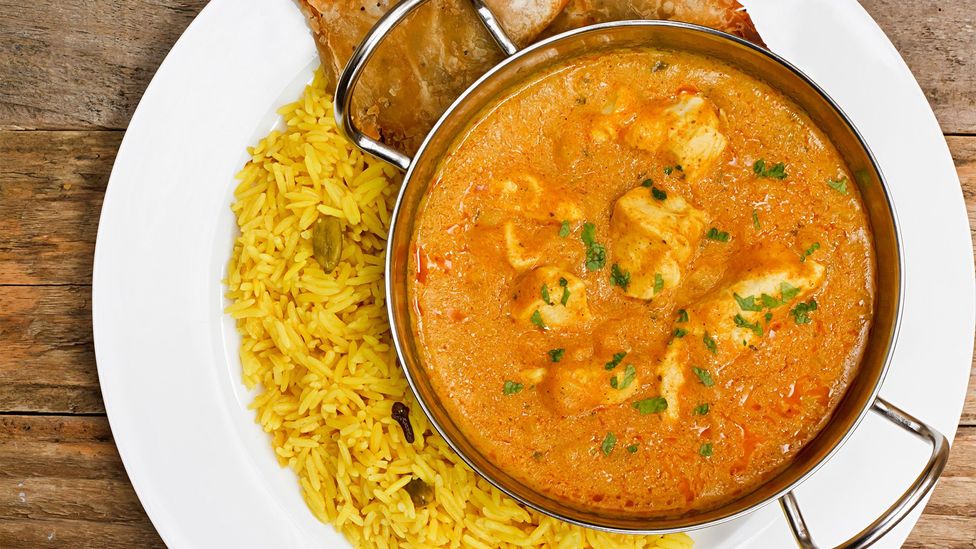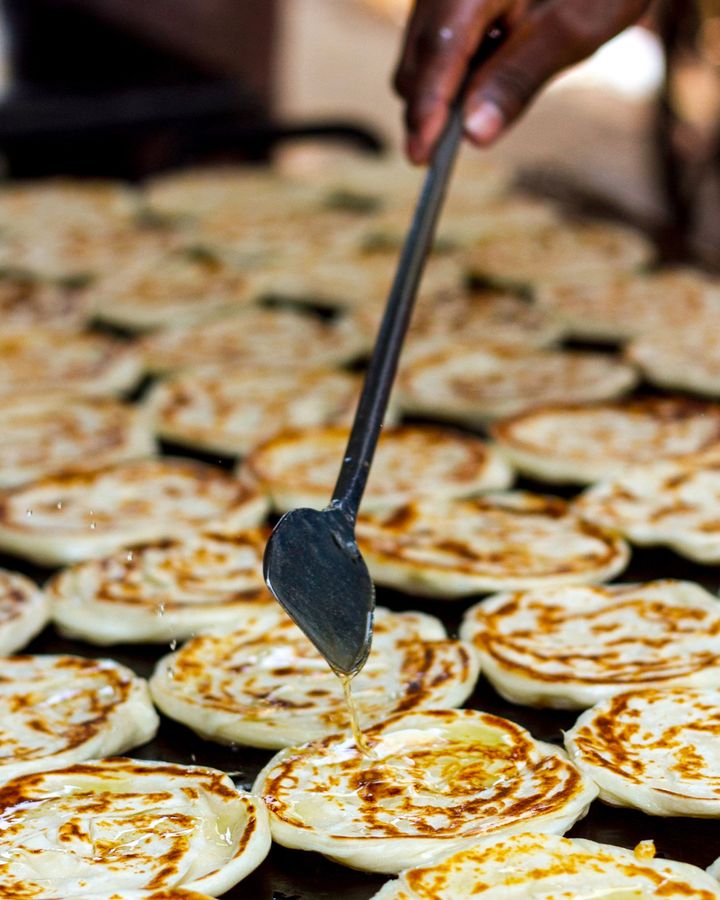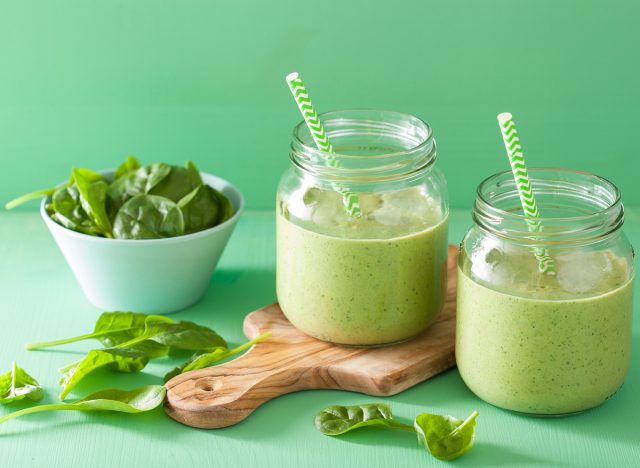
(CNN)Cat food brand Fancy Feast is expanding into feline-inspired human cuisine, with a New York City Italian restaurant designed to celebrate the company's new line.
https://ift.tt/74NOCFt
food

(CNN)Cat food brand Fancy Feast is expanding into feline-inspired human cuisine, with a New York City Italian restaurant designed to celebrate the company's new line.

WASHINGTON, July 30, 2022 – Rachael’s Food Corporation, a Chicopee, Mass. establishment, is recalling approximately 2,246 pounds of ready-to-eat meat and poultry wrap products that may be adulterated with Listeria monocytogenes, the U.S. Department of Agriculture’s Food Safety and Inspection Service (FSIS) announced today.
The ready-to-eat meat and poultry wraps were produced from July 15, 2022, through July 20, 2022. The following products are subject to recall [view labels]:
The products subject to recall bear establishment number “EST 34657” or “P34657” inside the USDA mark of inspection. These items were shipped to retail locations in Connecticut, Massachusetts, Rhode Island, and New York.
The problem was discovered by FSIS during follow-up procedures after a routine FSIS product sample confirmed positive for Listeria monocytogenes.
There have been no confirmed reports of adverse reactions due to consumption of these products. Anyone concerned about an injury or illness should contact a healthcare provider.
Consumption of food contaminated with L. monocytogenes can cause listeriosis, a serious infection that primarily affects older adults, persons with weakened immune systems, and pregnant women and their newborns. Less commonly, persons outside these risk groups are affected.
Listeriosis can cause fever, muscle aches, headache, stiff neck, confusion, loss of balance and convulsions sometimes preceded by diarrhea or other gastrointestinal symptoms. An invasive infection spreads beyond the gastrointestinal tract. In pregnant women, the infection can cause miscarriages, stillbirths, premature delivery or life-threatening infection of the newborn. In addition, serious and sometimes fatal infections in older adults and persons with weakened immune systems. Listeriosis is treated with antibiotics. Persons in the higher-risk categories who experience flu-like symptoms within two months after eating contaminated food should seek medical care and tell the health care provider about eating the contaminated food.
FSIS is concerned that some product may be in consumers’ refrigerators. Consumers who have purchased these products are urged not to consume them. These products should be thrown away or returned to the place of purchase.
FSIS routinely conducts recall effectiveness checks to verify recalling firms notify their customers of the recall and that steps are taken to make certain that the product is no longer available to consumers. When available, the retail distribution list(s) will be posted on the FSIS website at www.fsis.usda.gov/recalls.
Media and consumers with questions regarding the recall can contact Michael Pepin, VP Operations of Rachael’s Food Corp, at (413) 888-1629 or mpepin@thencd.com.
Consumers with food safety questions can call the toll-free USDA Meat and Poultry Hotline at 888-MPHotline (888-674-6854) or live chat via Ask USDA from 10 a.m. to 6 p.m. (Eastern Time) Monday through Friday. Consumers can also browse food safety messages at Ask USDA or send a question via email to MPHotline@usda.gov. For consumers that need to report a problem with a meat, poultry, or egg product, the online Electronic Consumer Complaint Monitoring System can be accessed 24 hours a day at https://foodcomplaint.fsis.usda.gov/eCCF/.
Article From & Read More ( Rachael's Food Corporation Recalls Ready-To-Eat Meat and Poultry Wrap Products Due to Possible Listeria Contamination | Food Safety and Inspection Service - fsis.usda.gov )
How the agriculture industry could go from farming to “ferming.”
From “The Daily” newsletter: One big idea on the news, from the team that brings you “The Daily” podcast. You can sign up for the newsletter here.
The lie was delicious.
For years, Americans consumed their frothy, full-dairy cappuccinos, marbled meat and flaky fried chicken without worry. The food was cheap. The drive-throughs, abundant. And the supply seemed infinite — until it wasn’t.
Over the last few decades, a steady drumbeat of documentaries, books and escalating disasters has made it clear that America’s current food system, filled with factories and feedlots, can’t be sustained without making the planet and its people sick. Industrial agriculture, responsible for one-third of all greenhouse gas emissions around the world, is destroying ecosystems.
“If we want to have an American type of food consumption, we need three to five planets,” Dr. Ferdinand von Meyenn, a Swiss food scientist, said in a phone interview. “We don’t have that.”
Americans are aware. A majority, including both Republicans and Democrats, say they are trying to reduce their meat and dairy consumption. Still, inflation is high, systems are stubborn and tastes are hard to change.
So scientists have been searching for solutions, ones that will make protein-rich food cheap, accessible and far more sustainable. The good news? They already have answers. The problem, they say, is scaling them.
People need protein for balanced, healthy diets. But that’s become a problem for the planet.
“We get most of our protein-rich and fat-rich foods from animal farming,” George Monbiot, an ecologist and journalist, said in a phone interview this week. “And animal farming is arguably the most destructive of all industries on Earth.”
He added that the industry as a whole is “the primary cause of habitat destruction, wildlife loss, extinction, land use, soil degradation, water use and one of the major causes of climate breakdown.”
In an effort to address this problem and limit animal cruelty, food entrepreneurs and scientists have spent decades working to develop high-protein meat alternatives from plants. But until just a few years ago, these products were a novelty, eaten by a small group of committed vegans and vegetarians.
That’s changed. Today, popular plant-based alternatives, like those from Beyond Meat and Impossible Foods, appear on menus of restaurants around the country, from Panda Express to Long John Silver’s. Seventy-one percent of Americans have tried a plant-based burger or other meat alternatives. Demand for alternatives to dairy has been growing, too. Now, almond, oat and other nondairy products make up 14 percent of milk sales in grocery stores.
But even if protein is available in other forms, Americans aren’t converted. In a 2018 Gallup poll, only 5 percent said they were vegetarians. The majority of the country has high fidelity to meat and dairy products — a taste that has long been difficult to replicate with plants.
“To put it simply, plants are crunchy, and meat is chewy. This is why veggie burgers can often feel crumbly or mushy in texture, without the bite and springiness of animal protein,” the chef J. Kenji López-Alt wrote for The Times. He added that “animal fat, which provides mouth-coating richness and juiciness,” is also difficult to replicate with plant-based fats.
But researchers have been working on a solution — one that can replicate the those nutrients, tastes and textures without using animals.
Fermentation, essential for making sourdough bread, beer and cheese, has been around for centuries. But advances in the science of fermentation are helping researchers decouple animals from the proteins they produce.
Specifically, “precision fermentation” is helping food scientists grow ingredients found in animal products without the need for a traditional farm. Instead, the scientists isolate the specific ingredients, then multiply their cells in brewery-style tanks. The result? Animal-free eggs, milk and meat that are biologically similar to animal products.
“It’s a new way of producing protein-rich and fat-rich foods, which can greatly reduce the amount of land we require and the amount of water,” Mr. Monbiot said.
Recent innovations in precision fermentation are allowing scientists to replicate, for example, “the exact fatty acid” that makes meat taste like meat, said Liz Specht, who oversees a research team focused on the future of alternative protein at the Good Food Institute. Experts say these developments will help close the gap between plant-based products and their animal-derived analogues, making them nearly indistinguishable in taste and texture.
“It’s a tool in the tool kit to get these plant-based products over those next few hurdles, from a sensory perspective and from a cost-reduction perspective,” she added. “This is very, very different than what was happening in the protein space, say, five years ago.”
These products, alongside lab-cultivated meat, could appeal to flexitarians or to occasional consumers of plant-based products who haven’t been sold on the taste so far, enabling more consumption of meat alternatives.
And that little bit could make all the difference, scientists say.
A recent study in Nature found that replacing just 20 percent of global beef consumption and other grazing livestock with “microbial proteins,” or those made from fermentation, could cut annual deforestation in half by 2050. (Whether the plant-based foods, many of which are highly processed, are healthier is subject to debate.)
“Replacing the milk, meat and, one day, even the eggs that we eat would massively take pressure off the planet,” Mr. Monbiot said. “It could also develop a whole new cuisine that we can’t even imagine at the moment. Just as the first farmers to capture a wild cow weren’t thinking about Camembert.”
Enthusiasm for this innovation abounds. (“Precision fermentation is the most important environmental technology humanity has ever developed,” Mr. Monbiot said. “We would be idiots to turn our back on it.”)
But the question remains: How quickly and effectively can the companies working in this space scale their work — and bring products in development to market?
Growth in this corner of the alternative-meat industry has largely been facilitated by private investment. And interest is booming: Alternative protein fermentation companies raised $1.7 billion in 2021, up 285 percent from 2020.
Still, start-ups working on innovating fermented foods are navigating “inherent inefficiencies,” Ms. Specht said. To succeed, and deliver a return for investors, they need to build new infrastructure and nurture talent in a food industry trained to support animal farming.
“They’re on a knife’s edge of profitability,” Ms. Specht added, while the companies also try to deliver products at a “price point within reach of most consumers.”
She argues that it’s a critical moment for governments to invest in “research and development and provide incentivizes for building out the industry’s infrastructure,” as many nations have invested in the renewable energy sector in recent years.
Without regulation and support, some worry the industry could one day be dominated by major agriculture companies, like Tyson, Smithfield, Perdue and Hormel, which have all rolled out meat alternatives in recent years.
“Monopoly and intellectual property is a genuine worry,” Mr. Monbiot said. “Ninety percent of the world’s grain passes through the hands of four corporations.”
“We don’t want to replicate that problem. We want to confront that dominance,” he added.
Have you ever been on a date in a bizarre or unexpected location? Maybe you crossed the Atlantic Ocean on a cargo ship for your 10th date. Or perhaps you wound up on the side of a mountain. Or at a restaurant after hours.
The Modern Love podcast team is collecting stories about out-of-the-ordinary date spots. They want to know: What led you there, who were you with and what made it memorable?
If this sparks a story from your life, visit nytimes.com/datestory for submission details. You may be featured in a future episode.
Monday: Crypto was supposed to exist outside the fickleness of the financial system. So why is its value falling?
Tuesday: How a bill protecting marriage equality might now, improbably, become law.
Wednesday: The N.F.L.’s biggest scandal.
Thursday: How expecting inflation can actually create more inflation.
Friday: The rise of the conservative Latina voter.
Have thoughts about the show? Tell us what you think at thedaily@nytimes.com.
Were you forwarded this newsletter? Subscribe here to get it delivered to your inbox.
Love podcasts? Join The New York Times Podcast Club on Facebook.
[unable to retrieve full-text content]
Health Department Staff Share Food Safety Information Putnam County NY Article From & Read More ( Health Department Staff Share Food Safety Information - Putnam County NY )Indian food author Kalyan Karmakar is making up for lost time.
Today, he enjoys the subtle touch of ghee in many of his favourite Bengali dishes, adding it to steamed rice with fried kaatla fish (Indian carp) for ghee bhaat, and swirling it into phyaana bhaat, a one-pot rice dish cooked with its own starch, mashed potato and a boiled egg. Even his khichuri (also spelled khichdi), a comforting rice and lentil porridge Karmakar associates with rainy days, is incomplete without the ubiquitous fat.
But it wasn't always like this.
"I belong to the set of people who grew up under the impression that ghee is unhealthy and [I am] now making up for it," he said, "It's [essentially] the purest food on Earth."
For millennia, ghee has been a venerated staple of the subcontinental diet, but it fell out of favour a few decades ago when saturated fats were largely considered to be unhealthy. But more recently, as the thinking around saturated fats is shifting globally, Indians are finding their own way back to this ingredient that's so integral to their cuisine.
For Karmakar, a renewed interest in ghee is emblematic of a return-to-basics movement in India, which was years in the making but fast-tracked during the pandemic, when "people started being more mindful about their food", he explained. This movement is also part of an overall trend towards "slow food". In keeping with the movement's philosophy, ghee can be produced locally (even at home) and has inextricable cultural ties.
Many Indians make ghee at home by skimming off the cream (called malai in Hindi) that forms when unpasteurised raw milk is boiled. Then, they churn it, traditionally by hand using a wooden stick, but now, more frequently, in a blender – usually adding a spoon of yogurt or curd and ice cubes – to make butter. The butter floats on top of the buttermilk (which is reserved to prepare other dishes, such as lentils) and is then boiled to make ghee.
Making ghee is a labour of love for Nitin Ahir, co-founder of GirOrganic, a dairy farm and ghee producer in the city of Surat in the west Indian state of Gujarat. Instead of using imported cow breeds like Jersey, Holstein and Friesian like mass producers do, he gets his milk from his herd of Gir cows, an Indian-born breed native to the Gir hills and forests of the Kathiawar Peninsula. He allows his cows to graze openly on grass and makes sure that calves have their rightful first share of their mothers' milk before milking.
His A2 ghee, a type of ghee that is considered nutritionally superior, is made via the "bilona method" in which a small motor-operated machine moves clockwise and anti-clockwise mimicking the traditional motion of a handheld wooden churner, a process that he admits "isn't the most cost-effective and resists large scale production". Nevertheless, he estimates he's witnessed a 25-30% increase in demand for his ghee since the pandemic began.
At a basic level, ghee is a type of clarified butter believed to have originated in India as a way to preserve butter from going rancid in the hot climate. Churned cream or butter is simmered slowly until the moisture evaporates and any browned milk solids are removed, resulting in a sumptuously rich, fragrant and nutty fat.
For many Indians, however, ghee is historically something more sacred than just a cooking fat.

Gir cows are an Indian-born breed native to the Gir hills and forests of the Kathiawar Peninsula (Credit: Meenakshi Vashistha/Alamy)
"Ghee is the final and purest form of milk – the last extract," said author and food historian Pritha Sen. "It was considered the purest offering to the gods and the medium by which prayers were carried to the heavens."
Its history dates back millennia. "Paeans to ghee are found in the Rig Veda, a collection of ancient hymns and prayers dating back nearly 4,000 years," explained Colleen Taylor Sen, a Chicago-based food historian and author of Feasts and Fasts: A History of Food in India. "According to legend, Prajapati, lord of the creatures, rubbed his hands together to create the first ghee, which he poured into flames to create his children."
Ghee is also deeply woven into the fabric of Indian culture. Traditionally, Hindus pour ghee into fire at marriages, funerals and other ceremonies as it is believed to be auspicious. In Ayurveda, a traditional Indian system of medicine, Ghee is considered a virtual panacea. And its wholesome qualities have been embraced by generations of mothers and grandmothers.

Traditionally, Hindus pour ghee into fire at marriages, funerals and other ceremonies (Credit: rvimages/Getty Images)
For US-based food author Sandeepa Mukherjee Datta, who runs Bong Mom's Cookbook, choosing ghee when it was time to introduce fat and oil to her babies was a no-brainer. "[It's] good fat, to give the young bones and brain nourishment and vitamins," she said.
Her mother took things a step further, insisting on nothing but homemade ghee. "She would make small jars of ghee and send it for her granddaughters with anyone who was flying across the Atlantic," said Datta. "That ghee was pure and tasted like a gift from heaven."
"Ghee is not only a medium to cook and fry food," said Datta. "Before the advent of fancy cereals and oats, every Bengali child was unified by the same breakfast dish on school mornings." The dish, ghee-alu sheddho-bhaat (ghee-mashed potatoes-rice), she explained, is almost Bengal's unofficial state food. "In those days, before carbs and fat got a bad rap, mothers felt this dish was the right balance to fortify their children throughout the day."
That "bad rap" – due to claims that saturated fats are bad for heart health – affected ghee, which has up to 50-70% saturated fat. For a few decades, consuming ghee fell out of favour in India. In the 1980s, vegetable oils were heavily promoted by the industry, and as vegetable oil consumption went up, ghee consumption went down. "The advertising would really shake you up," he said. "The urban and Western exposed population began looking down on traditional oils and using the vegetable oil."
With time, the neutral flavour of refined vegetable oil became the norm – and ghee the exception.

Chef Ranveer Brar always has ghee within arm's distance of his stovetop (Credit: Najeeb Azi)
"The whole fat conversation from the 1980s onwards was out to make saturated fats [the villain] – fortunately, we understand the fat and cholesterol space better now," said celebrity chef Ranveer Brar, an author, restaurateur and MasterChef India judge.
While experts still advise against a high-fat diet, some have begun to mellow their stance on the overall risks of saturated fat. And thanks partly to the high fat keto diet craze, ghee's popularity has soared in countries like the US.
However, the West's newfound interest in ghee may be somewhat misguided. For one thing, much is made of ghee's high smoke point, which passionate advocates extoll for its ability to withstand higher temperatures than butter. But according to Brar, the objective of cooking with ghee "isn't to get to smoking temperature in the first place; [it's] just to a point of extracting the flavours."
Furthermore, in India, ghee is not consumed in copious amounts for a quick-fix or to help stick to lower carb macros (due to the fat's satiating effect). Instead, the traditional approach to ghee is one of moderation, harmony and grace. Here, the pale yellow, crumbly fat isn't just blitzed into coffee; it stars as a final touch to dishes, moving slowly as small dollops of it are transformed by heat into a molten gold liquid, settling into every mouthful.

According to chef Ranveer Brar, ghee pairs well with dishes that have pronounced lactic notes like korma (Credit: StockSolutions/Getty Images)
So how is ghee best used? Brar recommends using ghee with lentils or in dishes with pronounced lactic notes, such as yoghourt-based curries, like korma. "Start with a light smear on your soups in winter, on your pita or flatbread. [Then] you can use it for marinating and tempering. [Eventually], it becomes an essential part of the [overall] bouquet that you inhale," Brar said.
Chef Manish Mehrotra, culinary director of Indian Accent restaurants and part of the Old World Hospitality group for the past 22 years, said it was important to him when setting a menu to include recipes paying homage to the unique flavour of ghee. He is confident the world is coming to understand his country's cuisine and recognise its "authentic" tastes. One of Mehrotra's signature dishes is ghee roast mutton boti (savoury chunks of flavourful meat), "The ghee imparts this smoky-sweet flavour. It's one of our best-sellers," he said.
Chef Nikita Rao of Mumbai's Ekaa restaurant believes in celebrating the distinctive nature of each ingredient. "It's ingredient-driven fine-dining," she said. With such concerted focus on the food itself, she explained how the ethos behind using ghee in a recipe is allowing it to assimilate and let other components sing. Her Morning Glory salad with tamarind dressing, for instance, is topped with homemade creme fraiche and a tempering of ghee, curry leaves and fiery resham patti chillies. "The tempering is less than 10% of the entire salad, but people absolutely love it, and buffalo ghee complements the entire dish."

Ghee is an ingredient that's integral to Indian cuisine (Credit: Rajdeep Ghosh/Getty Images)
Ultimately, understanding ghee means understanding a collective Indian identity, an approach to food that is cohesive, holistic and balanced – and one where ghee isn't a piecemeal part or overpowering presence. And when ghee is understood for its true essence, good things are sure to follow.
Brar always has ghee within arm's distance of his stovetop. As he said, "I've grown up with my grandma's chunni [scarf or stole] and the whole house smelling of ghee. When I reach for ghee, I'm searching for more than just a fat. I'm reaching out for my childhood."
BBC.com's World's Table "smashes the kitchen ceiling" by changing the way the world thinks about food, through the past, present and future.
---
Join more than three million BBC Travel fans by liking us on Facebook, or follow us on Twitter and Instagram.
If you liked this story, sign up for the weekly bbc.com features newsletter called "The Essential List". A handpicked selection of stories from BBC Future, Culture, Worklife and Travel, delivered to your inbox every Friday.

The merchants of the Grove Arcade are set to join forces for a new tradition on Saturday, July 30.
Taking place noon-7 p.m., the Grove Arcade Summer Festival includes engaging activities, demonstrations and a chance to connect the local community with the businesses within.
“Grove Arcade is hoping to provide a memorable experience for anyone who comes out,” says Travis LeJune, CEO of Dolo Digital, Grove Arcade’s media representative. “We expect everyone to enjoy the summer day, have a great time and appreciate what Asheville’s talented locals have to offer.”
Among the participating businesses, Grove Arcade mainstays Carmel’s Kitchen & Bar, Modesto and Baba Nahm are all rolling out celebratory dinner specials, while the relative Grove Arcade newcomer Huli Sue’s BBQ & Grill plans to supply homemade spam musubi, hurricane popcorn (a unique Hawaiian blend of popcorn, rice crackers, nori and buttery toppings) and free pineapple/mango soft-serve ice cream at the event.
“As one of the newest tenants in the Grove Arcade, we are thrilled to ride on the coattails of its rich and iconic historical significance in the Blue Ridge Mountains,” says Lisa Vann, who co-owns Huli Sue with partner, Ben Krueger. “We’re honored to be woven into its continuing traditions and experiences that will one day be a part of that said history.”
Fellow newcomer Wedge Brewing Co.’s latest local taproom will be pouring pints of a special beer.
Meanwhile, Battery Park Book Exchange plans to mix up a special “midsummer mimosa” and extend summer reading book specials to event guests.
A live raffle featuring prizes selected by Grove Arcade merchants will also accompany the celebration. Visitors will receive one free raffle ticket simply for showing up and may purchase additional tickets for chances to win products from Four Corners Home, ADORAtherapy, Serenity & Scott, Wake Foot Sanctuary and more. All raffle proceeds will be donated to Food Connection, which will also be in attendance
Live art exhibits, musical performances, face painting, games, aura readings, glass blowing, instrument lessons and more also await all those looking to help make history and celebrate local business.
The Grove Arcade is at 1 Page Ave. Visit avl.mx/bsr for more information.
Mary’s Mountain Cookies, a Colorado-based bakery with 18 locations across the Centennial State and Midwest, held the grand opening celebration for its first North Carolina location last month in downtown Asheville.
Situated directly under the AC Hotel by Marriot Asheville Downtown, the newest addition to Asheville’s bustling dessert scene will supply the 828 with quarter-pound cookies baked fresh daily. Popular flavors include chocolate chip, peanut butter, snickerdoodle, oatmeal raisin, s’mores, salted caramel and a rotating set of seasonal options. Customers who purchase a bundle of six cookies in-store will receive two complimentary cookies, and those who buy a bundle of a dozen cookies will receive five free cookies.
“We hope people leave the shop feeling happy and with their sweet tooth satisfied,” says owner Meghan Marshall. “It’s a joy for us to do this every day, and we want to pass that joy along to anyone who takes the time to come see us.”
Mary’s Mountain Cookies is at 10 Broadway, Suite 129. Visit avl.mx/bss for more information.
On Saturday, July 30, noon-5 p.m., Highland Brewing Co. will host a release party at The Meadow, as part of its ongoing Pints with Purpose collaboration series. The latest special brew, Survivor Strong, a hazy India pale ale, benefits the local nonprofit Helpmate, which supports people leaving situations of domestic violence.
There will be pickup volleyball games, a glitter tattoo booth, hooper demonstrations and musical performances from Wild Bodema at noon and Buffalo Kings, 2-5 p.m. Blue Collar Diner, El Querubin and Smasheville food trucks will be on-site during the event. Buggy Pops will also be in attendance dishing out ice-cold popsicles to help combat the hot July sun.
Staff from Helpmate will also be available and accept donations for survivors of domestic violence throughout the event
The Meadow at Highland Brewing is at 12 Old Charlotte Highway, Suite 200. Visit avl.mx/8ze for more information.
The Beauty Boost Asheville, a community group designed for women to feel empowered and motivated, will host a special Christmas in July experience Sunday, July 31, 2-7 p.m., at Mills River Brewing Co.
A number of local shops and services, including Wild Fire Pottery, Blue Intuition and Basile Wraps, will set up complimentary stations intended to encourage networking.
Juju’s Craft Cookery food truck will serve beer-friendly food, such as burgers, wings and nachos, for hungry shoppers hoping to refuel as they hop from station to station. The event is free, but those who register in advance will receive a free entry to a seasonally themed raffle.
Mills River Brewing Co. is at 336 Banner Farm Road. Visit avl.mx/bst for additional information and registration.
Earlier this month on Instagram, chef Elliot Moss, a name synonymous with WNC barbecue, announced his departure from Buxton Hall Barbecue and Buxton Chicken Palace.
“I’m heartbroken to say that I’m officially officially no longer involved or a part of Buxton Hall BBQ or Buxton Chicken Palace,” wrote Moss in the post. “My partners and I have decided to part ways, and I have sold my interest in the business to them.”
In 2015, Moss opened Buxton Hall Barbecue with Chai Pani’s Meherwan Irani. Moss and Irani doubled down on their shared success by expanding operations and trying a new concept with Buxton Chicken Palace in 2021, offering up a fast, casual approach to scratch-made chicken sandwiches.
While no official announcement on leadership or creative changes has been made, both Buxton restaurants will continue to operate as usual. Moss plans to stay in Asheville and will reportedly be opening a new restaurant in town as early as this year.
Buxton Hall Barbecue is at 32 Banks Ave. Buxton Chicken Palace is at 56 Patton Ave., inside the S&W Market. Follow Elliot Moss on Instagram at avl.mx/bsu for news on his next move.
Cafetería y Taqueria la Jarochita, a new Mexican American restaurant from owners Guillermo Cortes and Patricia Zacarias, opened July 1, several months after the pair closed their previous restaurant Scrambled.
With significantly more space, a vastly expanded menu and the benefit of hindsight, Cortes and Zacarias are committed to learning from the past and firmly establishing their roots this time around.
“This is real, authentic homemade Mexican food,” says Cortes. “Our food looks and tastes different than any other restaurant in town.”
A large swath of Mexican culinary backgrounds melds into one at Cafetería y Taqueria la Jarochita, blending family recipes from Cortes’ Michoacán background and Zacarias’ Veracruz upbringing. The latter is well versed in a number of different cuisines spanning the many states and unique regions of Mexico, following an extensive epicurean education in her home country. The new menu reflects this journey, featuring a varied array of classic Mexican dishes and modern spins on traditional favorites.
Scratch-made mole has quickly become a favorite among the restaurant’s established regulars and new fans, as have the sopes, empanadas and memelas (masa cakes pressed thin then grilled), all made from fresh, in-house corn tortillas.
Several Mexican standards, like tacos al pastor, enchiladas and huevos rancheros, as well as American-style comforts — think omelets, pancakes and breakfast burritos — help round out a diverse menu.
Cafetería y Taqueria la Jarochita is at 2377 Hendersonville Road, Arden. Visit avl.mx/bsv for hours and additional information.
West Asheville’s Malvern Hills Bakery has closed, following three years in business. The proverbial rolling pin will be passed on to Dune Pierre Michel of French Broad Pantry as his bakery prepares to fill the vacated location.
“We want to thank all of our customers for their love, support and patience with us,” announced Malvern Hills Bakery’s owner and head baker, Alex Goodwin, via social media. “It is with great sadness that we have to announce that we have reached a point where we can no longer keep things running, and we will be closing down.”
French Broad Pantry, a mainstay at many tailgate farmer’s markets, plans to temporarily move away from attending markets as operations transition to the new location.
French Broad Pantry is at 1570 Patton Ave. Visit avl.mx/bsw for more information.

Iowa schools have more money to serve more locally grown foods in cafeteria meals, financed by the federal and state departments of agriculture.
The Iowa Department of Education received a total of $100,000 through the USDA Farm-to-School Grant, including $25,000 awarded by the Iowa Department of Agriculture and Land Stewardship. The funds will go toward connecting schools with farmers in the area, getting produce and meat to incorporate into breakfast and menus.
This is the second consecutive Farm-to-School grant awarded to Iowa, lasting for the 2022-23 and 2023-24 school years.
“It’s a win-win when we can assist our schools with providing nutritious and delicious meals to Iowa students while also building demand and markets for locally grown and produced Iowa products,” Iowa Secretary of Agriculture Mike Naig said in a news release.
Alongside the purchase of local food, the grant also covers programming at Iowa schools around sustainability and healthy eating. Schools can use grant money to bring in a local farmer or a chef to talk with students about how a certain food is grown, and teachers can use it for lessons on how to garden.
Already, state schools celebrate Iowa Local Food Day on the fourth Wednesday of September each year, leading into celebrating National Farm to School Month in October. The events are sponsored by the Iowa Farm to School and Early Care Coalition, a group focused on bringing local foods to schools.
By serving local food, like a muffin made from Iowa corn, students learn lessons like how food is made and why farming is so important in Iowa, the coalition argues.
Iowa Department of Education Director Ann Lebo said these sorts of events, funded by the grant, are a great benefit to schools, students and to local economies.
“Establishing strong local connections with farmers and producers and incorporating fresh local ingredients in school meals impacts student health and learning and helps keep school purchasing dollars right here in Iowa,” Lebo said in a statement.
The Iowa Department of Education is one of 123 recipients of this year’s grants. The Farm to School grant program was established in 2013, and has funded local food initiatives in all 50 states, as well as the District of Columbia, U.S. Virgin Islands, Guam, and Puerto Rico.
Article From & Read More ( Iowa receives national grant to serve more local food in schools - Iowa Capital Dispatch )[unable to retrieve full-text content]
Don’t Think Too Hard About Whether Fast Food Is ‘Healthy’ The Takeout Article From & Read More ( Don’t Think Too Hard About Whether Fast Food Is ‘Healthy’ - The Takeout )
MEXICO CITY -- Diana Kennedy, a tart-tongued British food writer devoted to Mexican cuisine, died Sunday. She was 99.
Kennedy spent much of her life learning and preserving the traditional cooking and ingredients of her adopted home, a mission that even in her 80s had her driving hundreds of miles across her adopted country in a rattling truck as she searched remote villages for elusive recipes.
Her nearly dozen cookbooks, including “Oaxaca al Gusto,” which won the 2011 James Beard Award for cookbook of the year, reflect a lifetime of groundbreaking culinary contributions and her effort to collect vanishing culinary traditions, a mission that began long before the rest of the culinary world was giving Mexican cooking the respect she felt it was due.
Her long-time friend Concepción Guadalupe Garza Rodríguez said that Kennedy died peacefully shortly before dawn Sunday at her home in Zitacuaro, about 100 miles west of Mexico City.
“Mexico is very grateful for her,” Garza Rodríguez said. Kennedy had had lunch at a local hotel on March 3 for her birthday, but during the past five weeks had mostly stayed in her room. Garza Rodríguez visited Kennedy last week and said she cried when they parted.
Mexico's Culture Ministry said via Twitter Sunday that Kennedy's “life was dedicated to discovering, compiling and preserving the richness of Mexican cuisine.”
“Diana understood as few do, that the conservation of nature is key to continue obtaining the ingredients that make it possible to keep creating the delicious dishes that characterize our cuisine,” the ministry said.
Her first cookbook, “The Cuisines of Mexico,” was written during long hours with home cooks across Mexico. It established Kennedy as the foremost authority on traditional Mexican cooking and remains the seminal work on the subject even four decades later. She described it as a gastronomy that humbled her and she credited those -- usually women -- who shared their recipes with her.
“Cooking teaches you that you’re not always in control,” she had said. “Cooking is life’s biggest comeuppance. Ingredients can fool you.”
She received the equivalent of knighthood in Mexico with the Congressional Order of the Aztec Eagle award for documenting and preserving regional Mexican cuisines. The United Kingdom also has honored her, awarding her a Member of the British Empire award for furthering cultural relations with Mexico.
Kennedy was born with an instinctive curiosity and love of food. She grew up in the United Kingdom eating what she called “good food, whole food,” if not a lot of food. During World War II, she was assigned to the Women Timber Corps, where food was simple and sometimes sparse — homemade bread, fresh cream, scones and berries on good days, nettle soup or buttered green beans when rations were lean.
Millions across Western Europe shared this simple sustenance, but for Kennedy these meals awakened an appreciation of flavor and texture that would last a lifetime.
She talked about her first mango — “I ate it in Jamaica’s Kingston harbor, standing in clear, blue warm sea, all that sweet, sweet juice” — the way some talk about their first crush.
Indeed, that first mango and her husband, Paul Kennedy, a New York Times correspondent, arrived in her life around the same time. He was on assignment in Haiti, she was traveling there. They fell in love and in 1957 she joined him in Mexico, where he was assigned.
Here a series of Mexican maids, as well as aunts, mothers and grandmothers of her new friends, gave Diana Kennedy her first Mexican cooking lessons — grinding corn for tamales, cooking rabbit in adobo. It was another culinary awakening. While her husband wrote about insurrections and revolutions, Kennedy traipsed a land that was, for her, “new, exciting and exotic,” sampling unique fruits, vegetables and herbs of various regions.
The couple moved to New York in 1966 when Paul Kennedy was dying of cancer.
Two years later, at the urging of New York Times food editor Craig Claiborne, she taught her first Mexican cooking class, hunting out ingredients in the Northeast to reproduce the bursting flavors of Mexico. Soon she was spending more of her time back in Mexico, establishing a retreat there that still serves as her home in the country.
In classes, cookbooks and lectures, her fundamental principal is simple: “There is never, ever, any excuse for bad food.”
She was known for her sharp-tongue commentary, even as her pioneering work helped turn Mexico into a culinary mecca for foodies and the world’s top chefs, and transformed a cuisine long dismissed as tortillas suffocated in heavy sauces, cheeses and sour cream.
She once told Jose Andres, James Beard Award winning chef and proprietor of an acclaimed Mexican restaurant, that his tamales were “bloody awful.”
She worried that famous chefs, who flocked to Mexico in recent years to study and experiment with the purity of the flora, fauna and flavors, were mixing the wrong ingredients.
“Many of them are using it as a novelty and do not know the things that go together,” she said. “If you are going to play around with ingredients, exotic ingredients, you’ve got to know how to treat them.”
Kennedy was fiercely private and guarded about who she let into her sustainable Mexican retreat near the city of Zitacuaro in the conflicted western state of Michoacan. No one was welcome unannounced. Cell phones were turned off and computers were kept in a writing studio. Her companions were her paid help, a staff who treated her like a dear friend, and several beloved — if somewhat fierce — dogs.
Growing in Kennedy’s vast and enchanting garden, remnants — and resurrections — of ancient culture climbed the stone walls. She worked hard to prevent the loss of local ingredients, creating a rolling farm of indigenous herbs and other produce. The growing continued in a vine-filled atrium in the center of her home, a steamy culinary paradise of vanilla, oregano, mint, bananas, and countless local herbs.
“Rebellious activist, an absolute defender of the environment, Diana Kennedy was and continues to be the best example of care for the environment and its biodiversity,” her editor Ana Luisa Anza wrote in a remembrance Sunday. She wrote that years ago Kennedy had set reaching the age of 100 as a goal to conclude her life’s work.
In 2019, the documentary “Diana Kennedy: Nothing Fancy,” showed a still feisty Kennedy relishing in the production of her garden and driving the bumpy roads of Zitacuaro.
In her later years, Kennedy had said she wanted to slow down, but couldn’t.
“There are so many more recipes out there, handed down mother to daughter that are going to be lost. There are seeds and herbs and roots that could disappear. There is absolutely so much more that needs to be done!” she said.
———
AP journalist Martha Mendoza contributed.
Article From & Read More ( Diana Kennedy, food writer devoted to Mexico, dies at 99 - ABC News )
Biological and chemical weapons have the potential to pose a national security threat to the U.S. that the country is not equipped to handle, a panel of lawmakers and a military leader told an audience at the Aspen Security Forum on Friday.
Why it matters: The COVID-19 pandemic underscored how globally debilitating and dangerous pathogens could be if deliberately engineered and released.
The big picture Army Gen. Richard Clarke, the commander of U.S. Special Operations Command, said chemical weapons such as chlorine and mustard gas had been used in 2014-16 by actors such as ISIS in Iraq and Syria.
What they're saying: “There are now weapons under development, and developed, that are designed to target specific people," Rep. Jason Crow (D-Colo.), a member of the House Committee on Armed Services and House Permanent Select Committee on Intelligence, told the audience.
Sen. Joni Ernst (R-Iowa), a member of the Senate's Subcommittee on Emerging Threats and Capabilities and Armed Services Committee, added that biological weapons can be equally dangerous if they are designed to target food systems rather than people.

Photo by Cole Saladino for Thrillist
July 24 is National Drive-Thru Day. In the US, this feels grossly unnecessary.
Nonetheless, it exists. No matter how many millions of cars zip through drive-thrus on a daily basis across the country, we've got a special day to celebrate the magic of getting food tossed into your car from a window in a kitchen. Naturally, there are deals to celebrate the arrival of National Drive-Thru Day, which you may or may not have known existed prior to finding out that there's a celebration taking place. Still, you can dig up deals at restaurants like McDonald's, Del Taco, Wendy's, and a whole lot of other chains sporting a drive-thru window.
Here are the best deals you'll find on National Drive-Thru Day.
Del Taco
The deal: Get a free Crispy Chicken Taco when you buy one during the week of National Drive-Thru Day. You'll have to be a Del Yeah! Rewards member, though.
When: July 24-31
Fazoli's
The deal: The code "DRIVETHRU" will get you six free breadsticks with any purchase made through the app.
When: Through July 28
Carl's Jr. & Hardee's
The deal: Join the newly-launched rewards program to get your choice of a free Western Bacon Cheeseburger, Famous Star, or Hand-Breaded Chicken Sandwich.
When: Ongoing
Popeyes
The deal: You can get your craving for that chicken sandwich fulfilled. Popeyes is offering free contactless delivery through its app with a minimum $20 order.
When: Ongoing

Metro Diner
The deal: It is bringing back its Pittsburgh Steak Salad, which is a salad that is topped with French fries, steak tips, blue cheese crumbles, and blue cheese dressing. It'll run you $15.
When: Through August 21
On the Border
The deal: Get an 1800 Tequila Grande Margarita for $5 to celebrate National Tequila Day.
When: July 24
Pluckers Wing Bar
The deal: Get a $5 order of Fried Cheese as part of a series of deals for Pluckers' 27th anniversary.
When: July 24
Pokeworks
The deal: Place an order of at least $30 and you can take $5 off with the code "POKEPICNIC." You'll have to be a rewards member and order either online or through the app.
When: Through July 31
KFC
The deal: Get free delivery when you order through the KFC app or website.
When: Through July 24
Noodles & Company
The deal: Grab a Regular Veggie entrée for the price of a small if you're a Noodles Rewards member.
When: July 18-24
Moe’s Southwest Grill
The deal: Every Sunday, kids under 12 get a free meal with the purchase of an adult entrée of at least $6.
When: Every Sunday
Dickey's Barbecue Pit
The deal: Kids can get free Texas-style barbecue on Sundays with all delivery and carryout orders when you use the code "KEFOLO." Though you have to order at least one entrée and hit the $10 minimum. If your kids like Texas-style barbecue, Sunday is a big day.
When: Every Sunday
Penn Station East Coast Subs
The deal:Grab BOGO sandwiches from the sub chain. Use the code "SUMMER2022" at participating locations.
When: Through July 31
Whole Foods
The deal: Get 20% off all hot dogs. If you're a Prime member, you'll get an extra 10% off. That deal includes plant-based hot dogs.
When: July 20-26
Here's our huuuuuuuge running list of all the free food you can get right now, as well as the best pizza deals, reward programs, birthday freebies, gift card offers, food delivery offers, alcohol delivery deals, and perks for getting your vaccination against COVID-19. If you want a little more than, say a free taco, we also have you covered with a long list of meals you can get at fast food chains under $5. You're welcome.
Kidney stones can be caused by not drinking enough water, exercising either too much or too little, eating food with too much salt or sugar, consuming high amounts of animal protein without many vegetables, and even obesity or weight loss surgery. If you do develop kidney stones, there are ways to help the process move along, including watching what you drink and eat.
According to Sydney Greene, MS, RD, a registered dietitian and member of our Medical Expert Board, the best foods to eat or avoid when experiencing kidney stones will depend on the type of kidney stone you are dealing with. The most common type of kidney stone experienced in adults is calcium oxalate stones; if we're talking about these particular stones, the best food you can eat is a combination of calcium-rich and oxalate-rich foods.
"One of the best dietary changes to make if experiencing these types of kidney stones is to eat calcium-rich foods with oxalate-rich foods," says Greene. "When consumed together, the calcium and oxalate are more likely to bind to one another before entering the kidneys."
According to The National Kidney Foundation, oxalate is naturally found in many foods, including fruits and vegetables, nuts and seeds, grains, and legumes. A common misunderstanding is that eliminating oxalate-rich foods in your diet will reduce the chances of forming calcium oxalate kidney stones. However, while not technically incorrect, this approach isn't the healthiest way to go about things.
The Foundation further suggests that calcium may tend to get a bad rap because of the name of the type of kidney stones. However, a diet low in calcium may actually increase your risk of developing kidney stones, which is why it's recommended to not reduce your calcium intake. Instead, focus on cutting back on the amount of sodium in your diet.

The combination of oxalate and calcium is more likely to bind to one another in the stomach and intestines before the kidneys begin processing. This makes them less likely to develop into kidney stones.6254a4d1642c605c54bf1cab17d50f1e
Greene continues to explain that there are ways to combine both calcium-rich foods and oxalate-rich foods in your everyday diet.
For example, green smoothies are a great way to include these types of food. Greens, especially spinach, tend to be high in oxalate. To get more calcium into your diet, blend greens with dairy milk, cow's milk kefir, or a nut milk fortified with calcium to get the proper nutrients.
For more healthy eating news, make sure to sign up for our newsletter!
Read the original article on Eat This, Not That!
Kayla Garritano
Heralded for offering similar grill and salad bar choices as Fogo de Chão (an international Brazilian steakhouse chain), but at a more acce...
